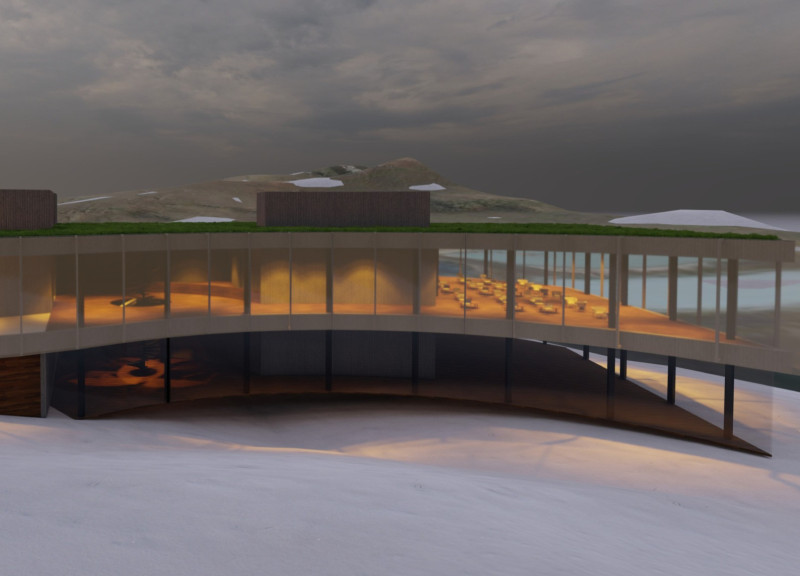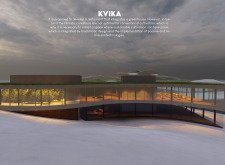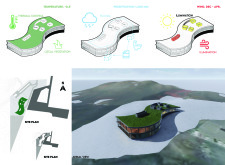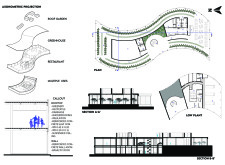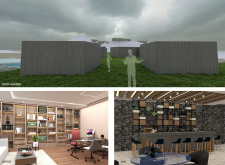5 key facts about this project
The architectural layout of KVIKA features an organic form that integrates seamlessly with the surrounding landscape. The building is segmented into three primary areas: the restaurant space, the greenhouse, and a rooftop garden. Each component functions independently while contributing to the overall ecosystem of the site. Natural light is maximized through an extensive glass facade, creating an inviting atmosphere and enhancing energy efficiency through natural illumination.
Bioclimatic principles are central to the design, highlighting the project's focus on sustainable architecture. Passive heating and cooling strategies have been incorporated to stabilize indoor temperatures, utilizing the thermal mass of reinforced concrete and basalt rock. The strategic orientation of the building also takes advantage of prevailing winds and sunlight, ensuring optimal conditions for both the greenhouse and the restaurant.
Materiality is a critical aspect of KVIKA. The project employs locally sourced basalt rock and reinforced concrete, which resonate with the Icelandic landscape. The use of glass not only facilitates daylighting but also connects occupants to the external environment, enhancing the experience of dining with views of the natural scenery. Geotextiles are implemented in the rooftop garden to support vegetation while managing erosion and drainage effectively.
The integrated greenhouse is one of KVIKA's defining features. It is designed for year-round cultivation of local produce, directly supplying the restaurant's kitchen and minimizing the carbon footprint associated with food transportation. This establishes a sustainable cycle of food production and consumption, aligning with contemporary ecological practices in architecture.
In addition to the greenhouse, the rooftop garden serves as both an aesthetic element and a functional space for relaxation and social interaction. The design encourages communal engagement and appreciation for the landscape, reinforcing the project's dual purpose of dining and agricultural education.
The office and pub area within KVIKA contribute to the multifunctionality of the building. These spaces are designed using natural materials that reflect the overall architectural vision. The interior layout promotes connectivity and collaboration among staff, enhancing productivity while maintaining a coherent design language throughout the project.
For a thorough understanding of this architectural endeavor, readers are encouraged to explore the project presentation. Reviewing the architectural plans, architectural sections, and architectural designs will provide further insights into the innovative ideas behind KVIKA. This exploration can offer a deeper appreciation for the intricate design elements and unique functional aspects that distinguish this project within the field of contemporary architecture.


